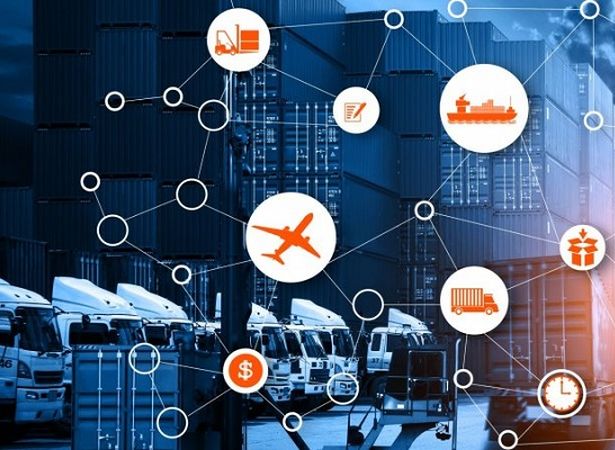India’s supply chain and logistics sector is undoubtedly one of the largest globally. It’s size, however, is not necessarily a source of comfort.
India’s supply chain and logistics sector is undoubtedly one of the largest globally. It’s size, however, is not necessarily a source of comfort.
Pegged at $215 billion, and growing at a compounded annual growth rate of 10.5%, India’s supply chain is marred by an unbalanced logistics modal mix, high indirect costs, poor infrastructure, fragmented networks, and lack of technology adoption, notes a new report jointly published by the Confederation of Indian Industry (CII) and Arthur D Little.
While the Covid-19 pandemic has led to faster adoption of technology, it has also aggravated these supply chain issues. Consider this. Nearly 75% of companies worldwide are experiencing disruptions with most companies, unfortunately, not having any contingency plan to deal with this situation.
India’s supply chain is no different. Logistics cost in India stands at 14% of GDP, compared to the global average of approximately 8%. This has generated a competitiveness gap of $180 billion for India, which could increase to $500 billion by 2030, according to the report.
The report notes that India ranked 44 in the World Bank Logistics Performance Index, last released in 2018–way behind the US at 14 and China at 26. Other South-Asian countries such as Thailand and Vietnam also have high logistics costs. These countries’ costs reach 14- and 16-17% of GDP, respectively. However, they fare slightly better than India on the logistics performance index, with Thailand at 32 and Vietnam at 39.
Transportation represents approximately 40% of logistics costs, which amount to 6% of GDP. Transportation by road makes up the lion’s share of this cost, at about 64%, followed by rail at 30% and waterway and air transport at 5- and 1%, respectively. India has the second-largest road network globally, which totals 5.5 million kilometers, yet national highways account for less than 2.7% of the total network. This puts a severe strain on the national highway network, which carries about 40% of the road traffic.
The rail network fares no better. India has one of the largest rail networks in the world, spread over 1.2 lakh kilometers. However, the average speed of freight trains in India is 24-25 kmph, compared to 38-40 kmph for those in the US and China.
The report asserts that the slow adoption of supply chain technologies, such as AI, blockchain and IoT, remains a major shortcoming.
According to the report, digitization is no longer an option in today’s world. Rather, the entire supply chain needs to be connected by integrating physical networks with digital technology. The latest technology, such as geo-tagging, auto-capture, and big data, enables collaboration, better forecasting, and traceability along the network, which helps to monitor supply chains.
Technology-enabled forecasting helps reduce wastage along the supply chain by allowing organizations to manage demand- and supply-side shocks. AI, blockchain technology, and IoT will
bring breakthrough productivity gains in the supply chain network, the report notes.
The results are already showing in cases where these technologies have been adopted. For instance, automation in packaging has helped industries reduce the workforce by 20-30%, which has curtailed losses due to labour migration, according to the report.
The report cites the example of how Proctor and Gamble (P&G) used technology when a hurricane disrupted the company’s supply chain in New Jersey eight years ago. Hurricane Sandy, which hit New Jersey in 2102, disrupted production in the P&G factory that made 91% of its perfumes, according to the report.
To tackle the problem, P&G deployed a cloud-based platform for real-time information on production and external demand, which helped minimize the fallout. The use of advanced analytics and quick decision-making limited the plant’s downtime to two-and-a-half days. Further, in 2017, P&G used digital tools to predict which suppliers, plants and distribution centers were likely to suffer damage from Hurricane Irma in Florida. This allowed the company to prepare for contingencies and avoid disruption and financial loss, according to the report.
The CII – Arthur D Little report insists that Indian companies should adopt a similar proactive stance if they want to improve their supply chains.
Key findings of the report:
COSTS: Logistics cost in India stands at 14% of GDP, compared to the global average of approximately 8%
DISADVANTAGE: This has generated a competitiveness gap of $180 billion for India, which could increase to $500 billion by 2030
TECHNOLOGY: Supply chains are transforming globally by adopting Industry 4.0 trends including agile networks, disruptive technologies, end-to-end visibility, and risk mitigation Vs. risk management
AI / IoT: India can benefit from the experience of mature economies, which have used emerging technologies such as artificial intelligence (AI), blockchain, and the Internet of Things (IoT) to enhance supply chain operations and resilience
DIGITAL To make India’s supply chain competitive, efficient, and resilient, Vision 2030 aims to pare logistics cost to 7-8 percent of GDP, optimize the logistics modal mix, digitalize 90% of supply chain operations, develop omni-channels, move towards green supply chains and enhance skill development
Source: CXOtoday.com







